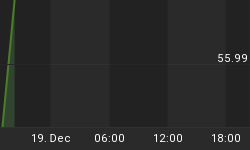7/26/2010 8:55:00 AM
Trade Recommendations:
Take no action.
Daily Trend Indications:

- Positions indicated as Green are Long positions and those indicated as Red are short positions.
- The State of the Market is used to determine how you should trade. A trending market can ignore support and resistance levels and maintain its direction longer than most traders think it will.
- The BIAS is used to determine how aggressive or defensive you should be with a position. If the BIAS is Bullish but the market is in a Trading state, you might enter a short trade to take advantage of a reversal off of resistance. The BIAS tells you to exit that trade on "weaker" signals than you might otherwise trade on as the market is predisposed to move in the direction of BIAS.
- At Risk is generally neutral represented by "-". When it is "Bullish" or "Bearish" it warns of a potential change in the BIAS.
- The Moving Averages are noted as they are important signposts used by the Chartists community in determining the relative health of the markets.
Current ETF positions are: In Cash.
Daily Trading Action
The major index ETFs opened lower and headed higher in the first fifteen minutes only to give up those gains in the next fifteen minutes. The market continued to trade in a choppy manner but the Dow and the NASDAQ Composite finished above their respective 200-Day Moving Averages (DMAs). The Russell-2000 (IWM 64.98 +1.56) rocketed 2.5% higher while the Semiconductor Index (SOX 364.53 +1.87) moved one half of one percent higher.. The Bank Index (KBE 23.76 +0.16) moved up two thirds of one percent while the Regional Bank Index (KRE 23.42 +0.32) moved up 1.4% but remains in a downtrend state. The 20+ Yr Bonds (TLT 99.78 -1.07) lost another one percent moving inverse to equities for the second day in a row. It remains in an uptrend state but dropped below its 20-DMA. Volume dropped slightly but was still below average with 1.138B shares traded on the NYSE. NASDAQ share volume increased modestly but remained average with 2.401B shares traded.
There were no economic reports of interest released. Instead, the big news of the day was the results of stress testing 91 European banks. Seven of those banks failed the tests. The complete results hadn't been released during the session but the headline that seven banks had failed was released shortly after noon EDT.
The Euro, which had been up versus the U.S. dollar moved lower on the results of the stress tests falling to -0.8% versus the U.S. dollar before staging a rebound to close slightly higher than the dollar.
Implied volatility for the S&P-500 (VIX 23.47 -1.16) fell 4.7% while implied volatility for the NASDAQ-100 (VXN 24.16 -1.06) fell 4.2%.
Commentary:
Friday's trading action was a positive reaction to the European bank stress tests. With seven banks failing, there were enough to show that the stress tests weren't a ridiculously low bar, but with only seven banks failing, market participants were confident enough to continue to bid up the price of stocks.
As we have been noting, the BEARISH BIAS which has existed for months now is likely to flip to a BULLISH BIAS for the major indexes in the coming week. None of the equity indexes we regularly follow has yet made this change. What it really means is that the longer term probability for the market is that it will move higher. However, the BIAS doesn't necessarily affect short term moves.
We are specifically watching the 1113-1114 area for the S&P-500. It is a resistance area that could finally trigger a short term sell-off before the market moves into a longer term bullish stance. On Friday, the S&P-500 finished at 1102.66.
We hope you have enjoyed this edition of the McMillan portfolio. You may send comments to mark@stockbarometer.com.
















